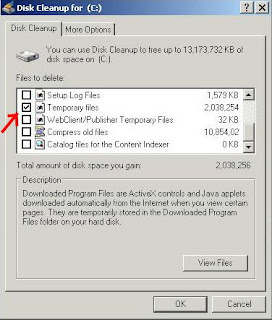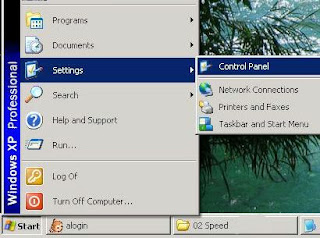

1.) Disable file indexing. The indexing service extracts information from documents and other files on the hard drive and creates a "searchable keyword index." As you can imagine, this process can be quite taxing on any system. The idea is that the user can search for a word, phrase, or property inside a document, should they have hundreds or thousands of documents and not know the file name of the document they want. Windows XP's built-in search functionality can still perform these kinds of searches without the Indexing service. It just takes longer. The OS has to open each file at the time of the request to help find what the user is looking for.
Most people never need this feature of search. Those who do are typically in a large corporate environment where thousands of documents are located on at least one server. But if you're a typical system builder, most of your clients are small and medium businesses. And if your clients have no need for this search feature,
I recommend disabling it.
1.1) double-click the My Computer icon.
1.2) right-click on the C: Drive, then select Properties.

1.3) Uncheck "Allow Indexing Service to index this disk for fast file searching." and click Apply button

1.4) Check at "Apply change to C:\, subfolders and files" and click OK.
If a warning or error message appears (such as "Access is denied"), click the Ignore All button.

2.) Once a month, run a disk cleanup. Here's how:
2.1 Double-click the My Computer icon.
2.2 Then right-click on the C: drive and select Properties.

2.3 Click the Disk Cleanup button

2.4 Check at Temporary files and click OK.

3.) Remove all spyware from the computer. Use free programs such as AdAware by Lavasoft or SpyBot Search & Destroy. Once these programs are installed, be sure to check for and download any updates before starting your search. Anything either program finds can be safely removed. Any free software that requires spyware to run will no longer function once the spyware portion has been removed; if your customer really wants the program even though it contains spyware, simply reinstall it. For more information on removing Spyware visit this Web Pro News page.
4.) Remove any unnecessary or unused programs from the Add/Remove Programs section of the Control Panel.
5.) Turn off any and all unnecessary animations, and disable active desktop. In fact, for optimal performance, turn off all animations.
Windows XP offers many different settings in this area. Here's how to do it:
5.1 Click Start button , Setting and Control Panel

5.2 Double click on System icon

5.4 Feel free to play around with the options offered here, as nothing you can change will alter the reliability of the computer -- only its responsiveness.
5.3 Click on the Advanced tab. and Select the Settings button located under Performance.

6.) Visit Microsoft's Windows update site regularly, and download all updates labeled Critical. Download any optional updates at your discretion.
7.) Update the customer's anti-virus software on a weekly, even daily, basis. Make sure they have only one anti-virus software package installed. Mixing anti-virus software is a sure way to spell disaster for performance and reliability.
8.) Do not partition the hard drive. Windows XP's NTFS file system runs more efficiently on one large partition. The data is no safer on a separate partition, and a reformat is never necessary to reinstall an operating system. The same excuses people offer for using partitions apply to using a folder instead.
For example, instead of putting all your data on the D: drive, put it in a folder called "D drive." You'll achieve the same organizational benefits that a separate partition offers, but without the degradation in system performance. Also, your free space won't be limited by the size of the partition; instead, it will be limited by the size of the entire hard drive. This means you won't need to resize any partitions, ever. That task can be time-consuming and also can result in lost data.
9.) If the PC has a CD or DVD recorder, check the drive manufacturer's Web site for updated firmware. In some cases you'll be able to upgrade the recorder to a faster speed. Best of all, it's free.
10.) At least once a year, open the computer's cases and blow out all the dust and debris. While you're in there, check that all the fans are turning properly.

No comments:
Post a Comment